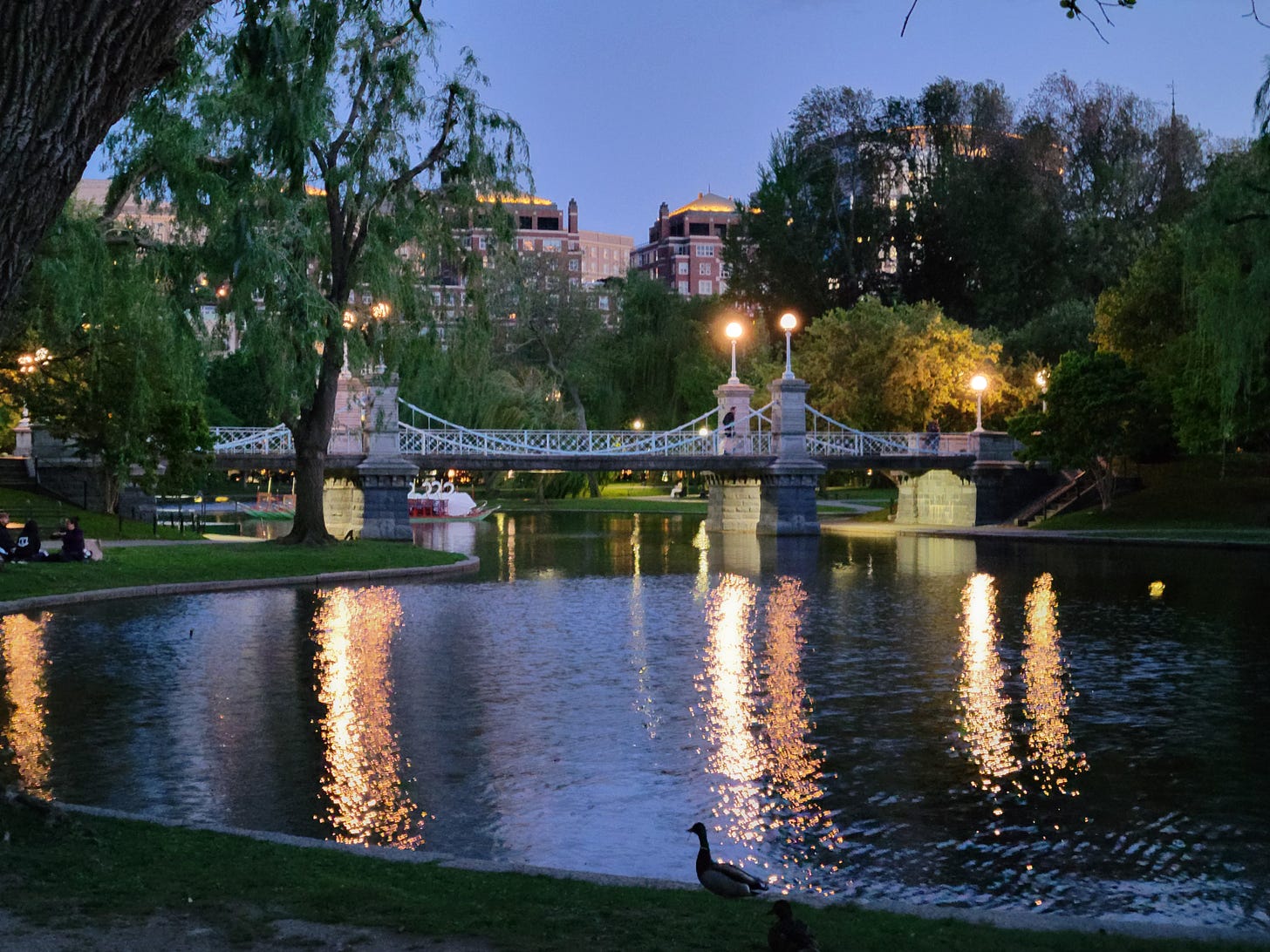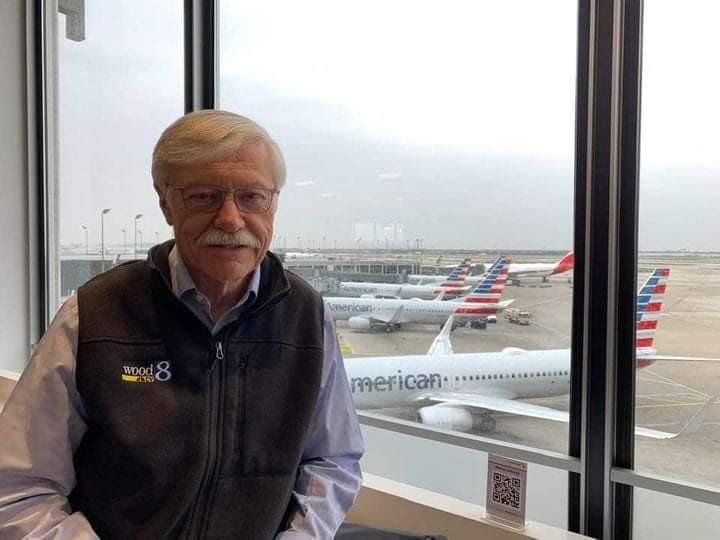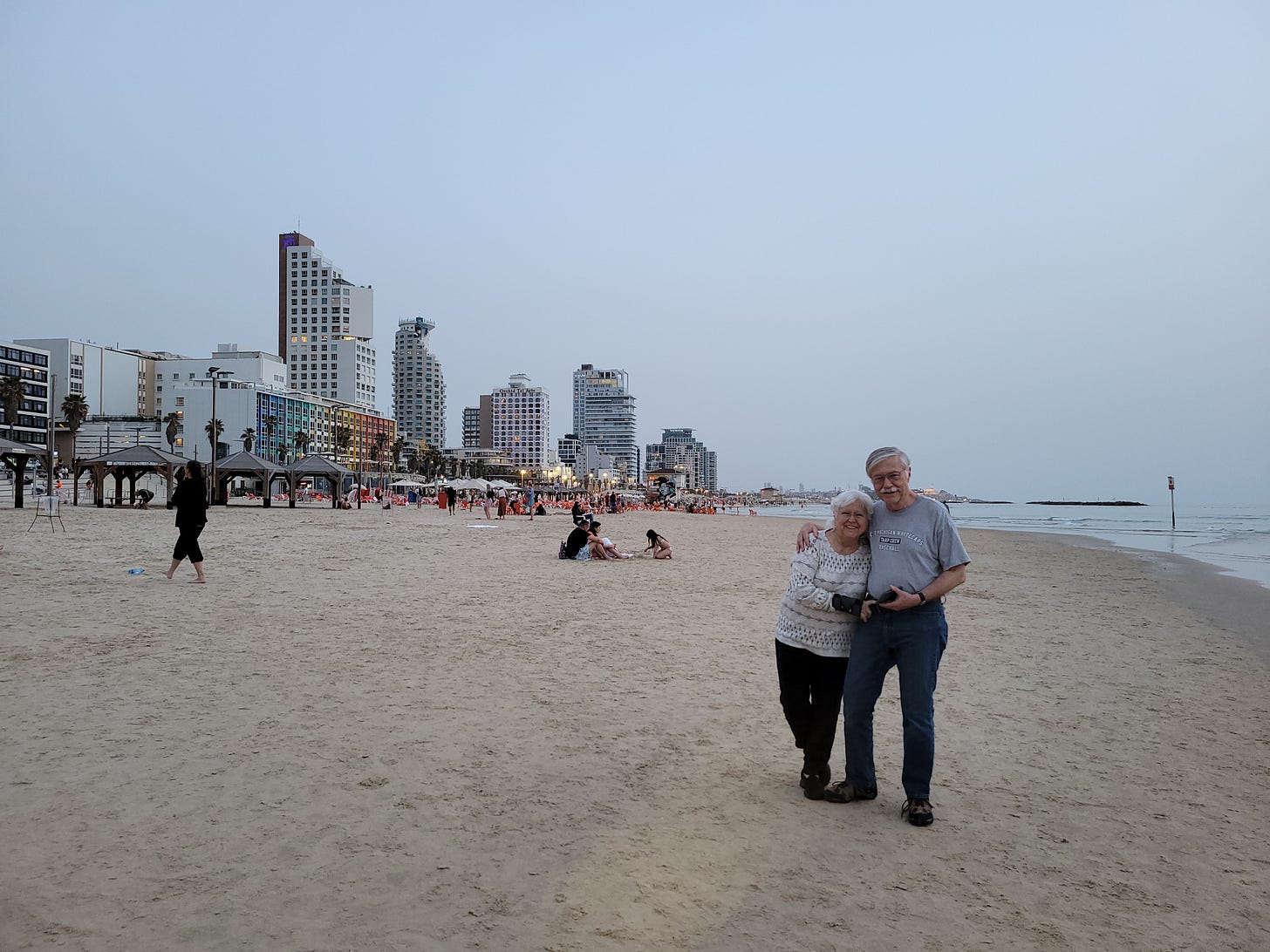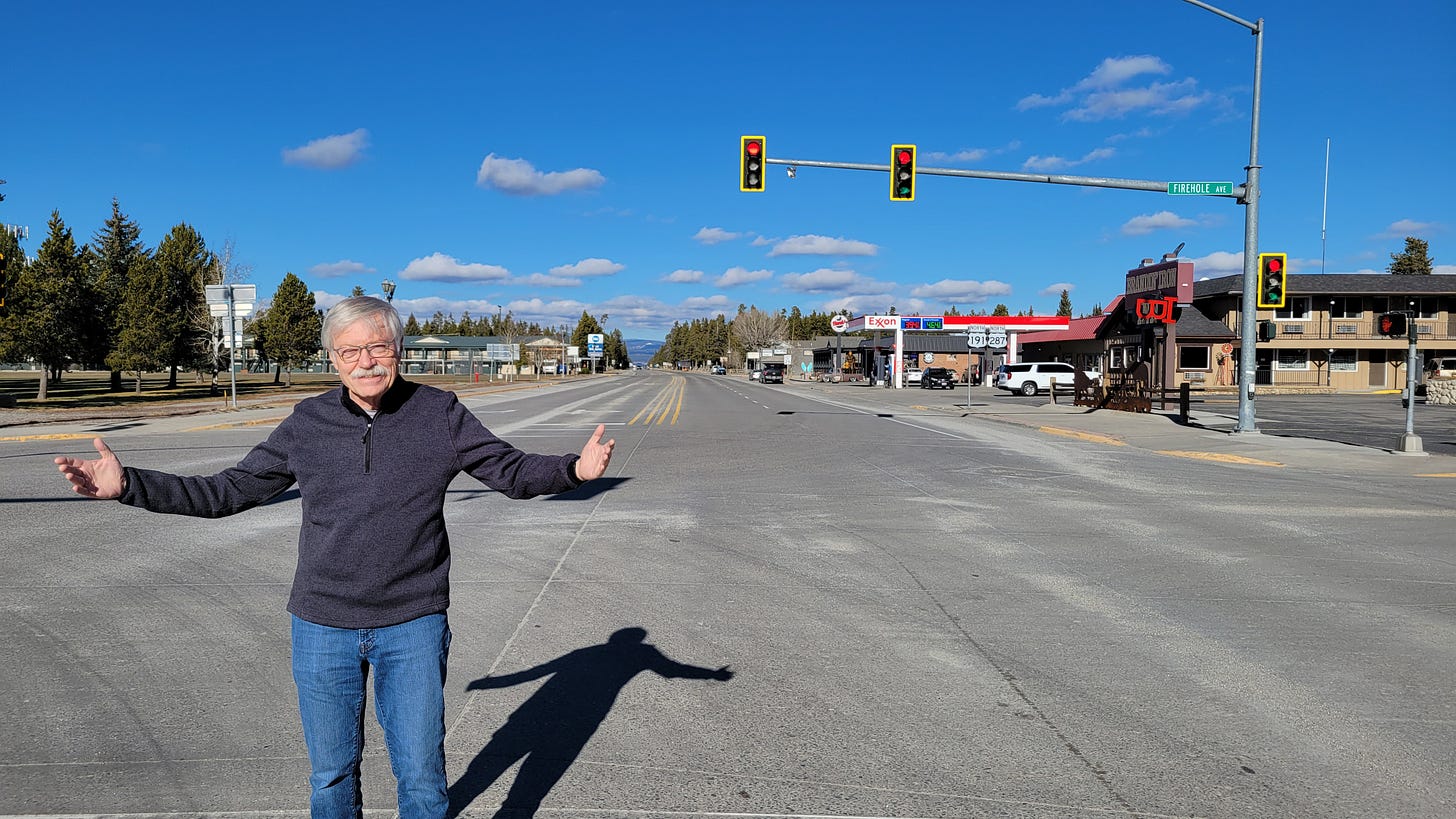Learning My New Platform
& 10 Tips for Happy Travels
Hello, West Michigan. I’m daughter #3, and I’m helping Dad get started on his new Substack platform. This is his new retirement hobby site, where you can expect updates about the weather and life, on an irregular, unpredictable, retirement basis.
Today, I’m using this post to teach dad some things about the Substack platform. They say to write about what you know, so I’ve chosen 10 tips and tricks that may help you when you travel. Plus, here are some photos from our happy travels.
1. Write your name and contact information in your suitcase
Many people put their name and contact information on a luggage tag on their suitcase. That’s a great start – you’d be surprised how many people don’t, but a lot of travelers do. Unfortunately, sometimes, these tags rip off during handling.
Another great thing to do is also write your name, phone number, trip itinerary and home airport on a sheet of paper for inside your luggage. Put the sheet of paper right on top of where someone would open the luggage.
If all else fails, airline staff may look in your bag for clues about your identity. This is a last resort, but when bags are far away from where they’re supposed to be, sometimes it can help. If your name and contact info is right there on top, workers can contact you immediately and get the bag on its merry way. My note usually says something like, “If this bag is so lost you had to open it, please contact: (name, phone number). My home airport is (GRR).” If you’re going abroad, add United States.
Photo: One of our first trips was to Boston, MA. This is Boston Commons. The American Meteorological Society offices are nearby.
2. Read your bag tag, keep your bag tag receipt
Your bag tag should have your name and final destination airport code on it (GRR is Grand Rapids, for example). When you check a bag, airline reps should give you a bag tag. If they don’t, ask for it. Read the tag to make sure the bag is checked under your name, and that it’s going to the right destination.
Save your receipt. You can also take a picture of your tag as a backup. If you arrive at your destination, and your bag doesn’t, the first thing airline reps will do is ask for your bag tag number.
About your luggage purchases
Occasionally, a bag gets damaged during handling. It’s a trade off – hard sided bags are the most likely to break. However, they tend to do a better job protecting the contents of a bag (just my own anecdotal observations). Choose what’s best for you when you’re purchasing luggage.
Even very expensive bags can sustain damage. I purchase mid-level luggage, like Amazon brand but there are lots of decent brands. It protects my stuff well enough, but it’s not so nice that I would cry if something happened to it.
Photo: Chicago O’Hare Airport. The airport code for O’Hare Airport is ORD. It’s named that because it used to be an orchard.
3. Don’t put things in the airplane seat back
I’ve learned this the hard way – don’t put your things in the airplane seat back. You think you’ll remember them, but sometimes, people don’t. Take the extra effort to put your phone and important papers away in the personal item under your seat. When you deplane, always check the seatback for personal items.
Photo: Washington DC. He’s just a Bill…
4. Bring an empty water bottle through security
Airport sundries are expensive, but you can’t bring bottled water through security – what to do? I bring an empty water bottle through security and refill it at a drinking fountain. I just do a commercial plastic water bottle, like an Aquafina or generic brand, rather than travel with a fancy mug, because I’m prone to losing things. But however you do it, you can save yourself a few bucks each way by bringing the water bottle with you.
This ends up being one of my fun points of travel, because I get to see the local water bottle brands from every country we go to. I don’t do a lot of souvenir shopping (we all have too much stuff, anyways), so trying the bottled water of the world is a little thing I do for fun.
Photo: On top of the world in Juneau, Alaska. Dad was perfectly dressed for the weather, because that’s how he rolls.
5. Put your name and contact information on your valuables
Just like you should put your name and contact information inside your checked luggage, you should also put it on your valuables. You can use the small, rectangular tags the airlines have at the check-in counter to put your name and number on your carry on and personal item. Put your name and phone number on your electronics, too. I programmed the lock screen of my cell phone to display an alternative number and the words, “If found, please return to.” Small stickers or contact info on cases can work for laptops and tablets.
Photo: Tower Bridge in London, England.
6. Leave early, things happen
If you need to be there on Saturday, leave at least by Thursday. The reason air travel is so safe is because we account for weather and maintenance issues. We stay safe because we don’t fly when it’s not safe. Unfortunately, this can create frustration and disappointment when things don’t go exactly according to schedule.
If you’re going on a cruise or guided tour, or if you’re going to a family event, leaving yourself a 1-3 day buffer can save you a lot of heartache. With work schedules and other obligations, this isn’t always possible, but if it’s an event you don’t want to miss, plan accordingly.
Also, consider travel insurance. Your right to compensation from the airline depends on the reason for the disruption. (Weather delays are not compensated). The airlines don’t function as insurance companies if you miss days of your hotel stay or cruise for a reason that is out of their control. For that, you’ll need to purchase travel insurance or be willing to assume the risk.
Photo: George W. Bush Library, Dallas, TX.
7. Try ear plugs, pack Kleenex
Two things I always pack for my travels are ear plugs and Kleenex. Sometimes, ear plugs on the plane help me feel less anxious, because the engine noises aren’t as loud. I also pack Kleenex. My phone ear buds are old school – they are inexpensive, buds only as opposed to headphones, and they’re not wireless. Those fancy, wireless ear buds are easy to lose. My wired ones are inexpensive and harder to lose and a fraction of the price.
Photo: Mom and Dad on the beach in Tel Aviv, Israel. We planned that trip 12 hours in advance.
8. Don’t stop eating and drinking
When you travel, you’re going places at unusual times and doing things off schedule. This can throw your entire system off and make you feel miserable. On previous trips, I would skip meals that weren’t on my typical schedule, and not drink much, wanting to avoid airplane bathrooms. That wasn’t a winning plan. There were times my body just revolted. Keep eating and drinking when you travel. You can bring a lot of food and snacks through TSA to cut down on costs.
Photo: Las Vegas sign while Dad was finishing his 50 states.
9. Your ticket name must match your TSA profile name exactly
This is for people with TSA pre-check or global entry. If you enter your TSA number into your airline reservation, but it doesn’t show on your ticket, check to make sure that your names match exactly. The name you used to get your TSA pre-check or global entry must match exactly with what you used to purchase your ticket. When the TSA number doesn’t appear, a mismatch is often the reason. I’ve also had it not appear for no reason at all. That was fixed by entering it again at a ticketing kiosk.
Photo: An empty West Yellowstone. Dad’s fraternity brother Grady Foster was our wonderful host!
10. Never check your valuables
Sometimes, bags misconnect. They get lost and break. Don’t ever check your medications, cash, keys and other things you absolutely cannot live without. Always keep these items on your person.
Photo: Portland, Oregon.
Thanks for helping us practice our blogging! Happy travels and thank you for visiting billsteffen.com.











